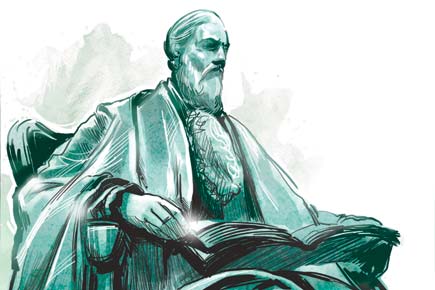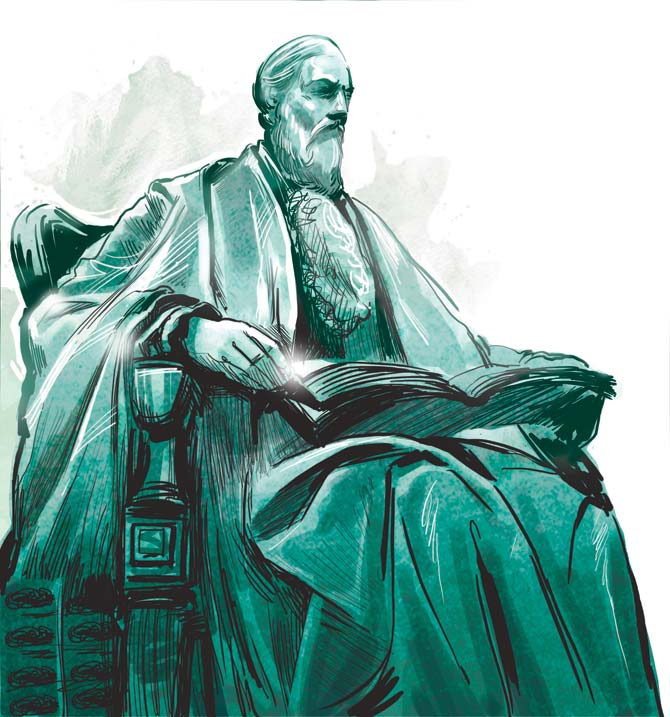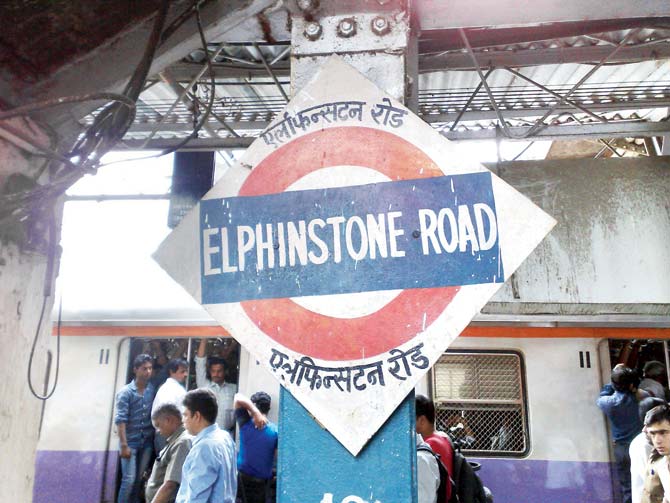Fiona Fernandez argues that changing the names of iconic stations could mean Mumbai losing invaluable markers of its growth and progress


ADVERTISEMENT
 A few years ago, the parting words of the visiting director of one of Europe’s premier museums, the Rijksmuseum, resonated with this journalist. He said during an interview, “To move into the future, all great world cities must respect the past.”
A few years ago, the parting words of the visiting director of one of Europe’s premier museums, the Rijksmuseum, resonated with this journalist. He said during an interview, “To move into the future, all great world cities must respect the past.”
As civic polls draw close, citizens of this cosmopolitan city are, once again, faced with the eventuality of a renaming spree initiated by our lawmakers. This time, it’s our railway stations’ turn. History will be rewritten, and in one telling blow, we’ll bid goodbye to the contributions of many of the founding fathers of Bombay.*

Elphinstone Road, named after former Governor of Bombay, John, Lord Elphinstone (1807-60) is on this list, according to a report that appeared in this newspaper on December 17, 2016. Few might be aware that this gentleman was a forceful administrator and visionary bureaucrat. The mutiny uprising of 1857 was during his term (1853-60). Along with the then Deputy Commissioner of Police (who later became Commissioner), Charles Forjett, he played a key role to ensure that the city was relatively riot-free. Later, when the Bombay Green was developed into a beautiful classical Italianate circle, Forjett, who by then was Municipal Commissioner, named this open space as Elphinstone Circle; it was later renamed after pro-nationalist newspaper editor, Benjamin Horniman. Incidentally, his uncle, Montstuart Elphinstone, was also Governor or Bombay (1819-27).
However, one of his biggest contributions remains his role in setting up the Dr Bhau Daji Lad Mumbai City Museum (it opened as Victoria and Albert Museum) in 1872. He decided to establish a museum under the patronage of the Government. By 1855, a committee was formed where Elphinstone appointed Dr George Buist as curator and secretary of the newly constituted Central Museum of Natural History, Economy, Geology, Industry and Arts. Work began to raise funds and source the finest artifacts and collections from across India. The museum was ready nearly two decades later, but his vision that the city needed a public museum, and the ability to identify the right people to lend expertise and financial support — Buist, Dr Bhau Daji Lad, Dr George Birdwood and Jugonnath Sunkarsett — is commendable.
Elphinstone was the first to realise the need to bring down the Fort walls to cater to a growing city’s needs. The Vihar Water works were also commissioned in his term. A keen supporter of the arts, he offered patronage to the Bombay Photographic Society. Little wonder, Indophiles and city historians are unanimous to declare that Elphinstone, along with his successor, Sir Bartle Frere, took the city to great heights in the 1850s and 60s.
There are other slices of history that will be erased. Marine Lines station was so named after the barracks of the Marine Battalion that was located here in the 19th century. Grant Road, Sandhurst Road and Reay Road railway stations were named after former Governors; history books reveal that the trio did their bit to develop a city on the threshold of change.
Apart from history being lost, the colossal cost involved needs to be debated. At a time when the city, and its railway commuters, in particular are stretched and stressed out, facilities like frequent services, women’s safety, and cleaner rakes and platforms should be priority.
The Urbs Primus in Indus (Latin: premier city in India) — a title that stamped its unique standing in its early days — is on the verge of witnessing another shake-up of its local history. Time will tell if these names stay in public domain despite this exercise. Or else, like countless instances in the past, it will be Mumbai’s loss.
*The city’s name was changed from Bombay to Mumbai in 1996. The name Bombay is used in historical context. mid-day’s Features Editor Fiona Fernandez relishes the city’s sights, sounds, smells and stones...wherever the ink and the inclination takes her. She tweets @bombayana. Send your feedback to mailbag@mid-day.com
 Subscribe today by clicking the link and stay updated with the latest news!" Click here!
Subscribe today by clicking the link and stay updated with the latest news!" Click here!






